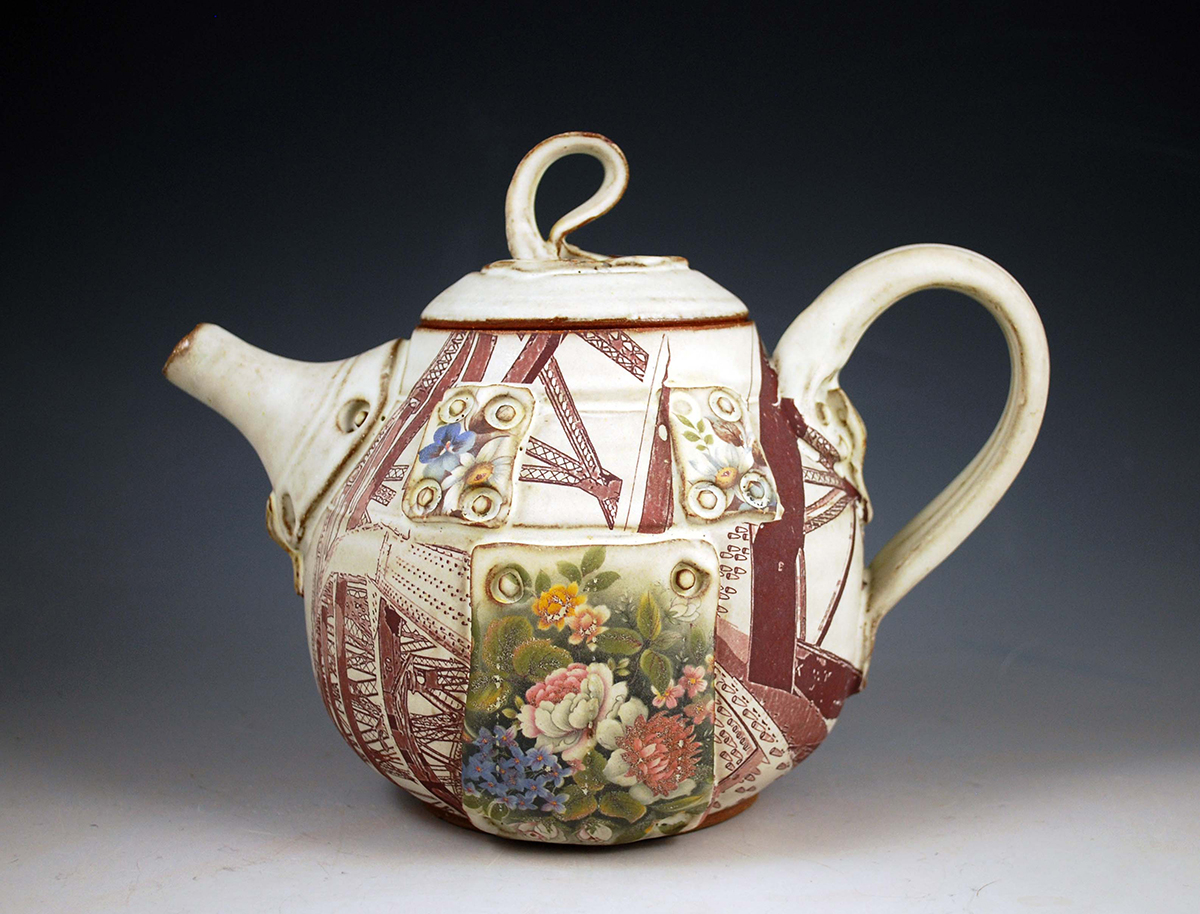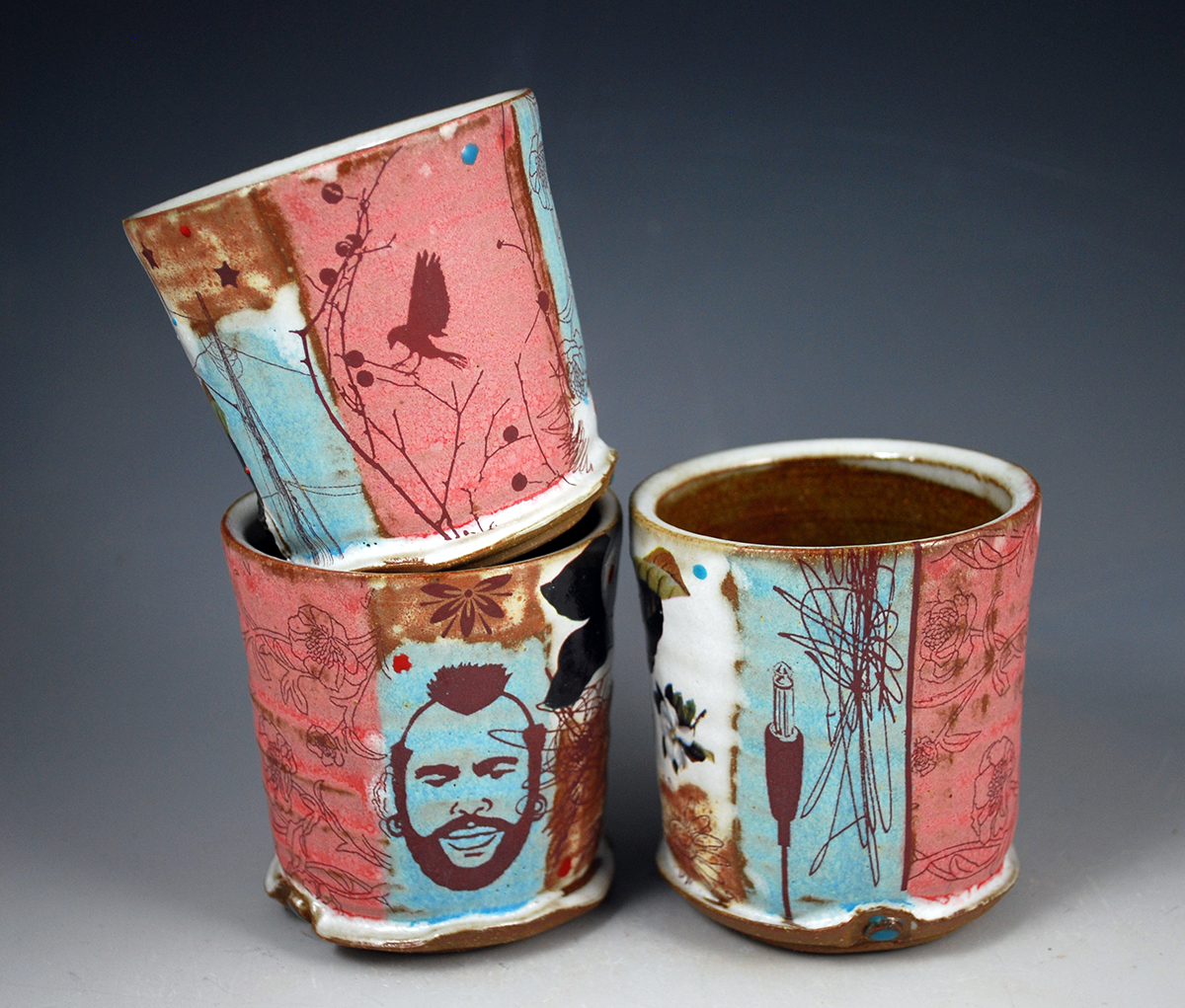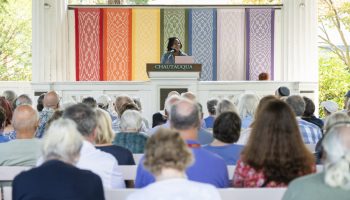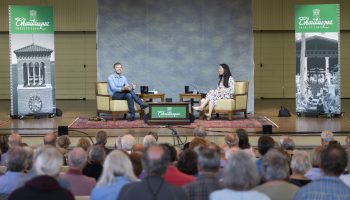Kyle Houser is, by his own admission, a busy guy.
“I do too many things, is what I do,” he said.
He works full time as the studio arts program manager at Pittsburgh Center for the Arts, teaches art history at the Community College of Allegheny County and in past summers, managed the Visual Arts at Chautauqua Institution’s School of Art ceramics studio. In his lecture at 7 p.m. Friday in the Hultquist Center, Houser1 will discuss working in the nonprofit sector and his roles as an artist and a teacher.
“Recently I was asked, ‘Well, are you an artist, or are you a teacher?’ ” he said. “And that’s a tough question. One really feeds the other.”

Houser said he makes his living as an educator, but he wouldn’t be teaching if he wasn’t also working as an artist. It also helps that he loves to talk about art.
“I’m fascinated with art history and why people did the things they did,” he said. “It’s about history, it’s about culture. That curiosity in me is the teacher, I think.”
Even with everything else going on, he still manages to find time for his own work — ceramics.
Houser begins building his functional pottery by throwing on the wheel. Part of the difference between pottery and ceramics, he said, is its use.
Ceramics includes pottery, but could also be sculpture or non-functional objects. By Houser’s definition, pottery is mugs, cups and bowls.
“You eat and drink out of it,” he said. “It’s utilitarian.”
That doesn’t mean it’s easy to make.
“It has to fit in your hand,” Houser said. “It’s the way your lip touches it, it’s the way you hold it, it’s the way the food goes in it — that’s a lot to think about. But if you like challenges, it presents quite a bit.”

One distinctive aspect of Houser’s pottery is his use of decals. Using Photoshop, he edits photographs to create graphics that he can turn into fireable decals. With practice, Houser has refined the process to retain crisp edges on the decals so there’s no loss of resolution, he said, even when the designs are fired.
Usually these decals are collaged landscapes and cityscapes. Houser, a “crazy commuter,” works in Pittsburgh and lives about 45 miles outside the city. With traffic, it takes him a little over an hour to drive to work, but he’s able to use the time to admire Pittsburgh’s bridges and architecture.
“Fragmented landscapes — it’s how I see things when I’m in the car,” he said.
Houser is interested in the chaos of disjoined visual information, how zipping along in a car turns the outside scene into a blur.
This “deluge” of information — bridges, gridwork, buildings, advertisements, bumper stickers — isn’t limited to images seen during a car ride. Houser is also interested in how people process what they see online and via mobile devices.
“We’re all kind of going about our life and seeing it in bits and pieces,” he said. “I think it’s important to understand how we process it, and are we processing it? And are we just getting bits and pieces that mean nothing?”
Incorporating those thoughts and images into his work, Houser said, is like “making a crazy collage every time.”





